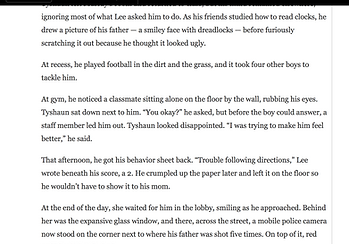Kick-o-Matic
DON'T JUST END YOUR STORIES.
FINISH THEM.
Having trouble finding a good ending (aka kicker) to your story, article, video or other piece?
This website is dedicated to helping you.
Some editors will tell you endings don’t matter any more because the average reader only spends something like 37 seconds reading web stories.
But of course you want people to read all the way to the end. And if your story just peters out weakly it won't leave much of an impression. The ending is your chance to leave an image, an example, a thought, or a fact that lingers with people.
Scroll down and click around for inspiring examples of great kickers, and tips and tools (including the Kick-O-Matic wheel) that will help you more easily finish with a flourish.
The 6-ish Types of Endings to Choose From
Sometimes we get writers block because we feel like there are an infinite number of options, and we can’t choose just one. One way to break that block is to narrow your choices. Think about the endings of your favorite movies, novels, etc. If you start categorizing them you'll soon realize that there are really only about six standard endings:
-
Solve the mystery - Spoiler alert! One way to keep readers hooked is to maintain a mystery to the very end and then finish off with the big surprising revelation.
-
Climactic Action - Lots of movies or stories end with shootouts, explosions, or crashes.
-
Loop back to the beginning (or lede) - It can be very powerful to connect the ending with the beginning.
-
Broaden the context - When you've focused on a story on an individual or group, ending with a widening of the angle that shows how those individuals represent a larger community is a great way to drive home the importance of the story.
-
Glance at the future - One of the most common kickers, especially in broadcast, is to "flick" or hint at what will happen next. Lots of movies end this way too.
-
(Re) Statement of the theme - Endings are a great way to drive home the "moral of the story" or to state (or re-state) a theme that has been developed throughout the piece.
The 5 ways to write an ending
Just as there are only a limited number of powerful ending choices, there are a limited number of ways (or types of sentences) that can be used to craft endings. Journalists generally have a toolbox containing only 5 kinds of statements we can use:
I'm a paragraph. Click here to add your own text and edit me. It's easy.














